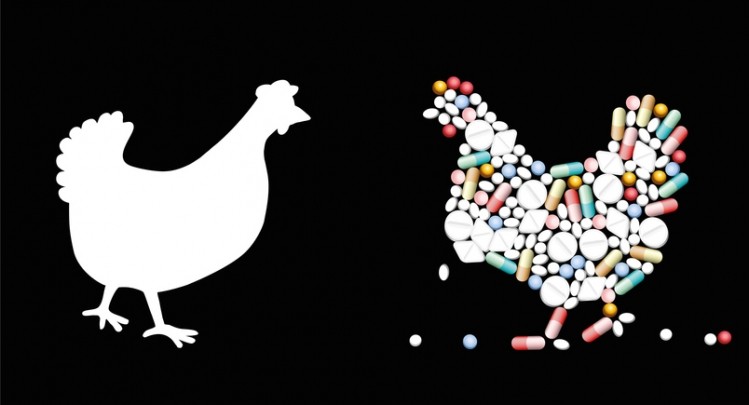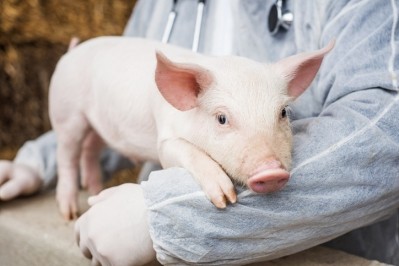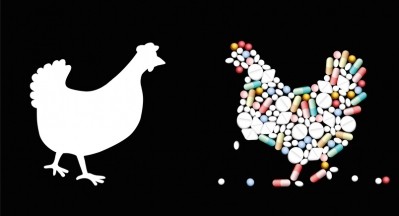US, Pakistani researchers team up to design antibiotic-free poultry support

The international research project involves CAD $2.8m ($2.1m US) in funding and team of researchers from Purdue University in the US along with professors from the University of Veterinary and Animal Sciences of Lahore and the University of Punjab – both in Pakistan, according to project information.
The goal of the effort is to find new ways to address diseases in poultry flocks without needing antibiotics, said Paul Ebner, professor in animal sciences with Purdue University. Like those in the US, producers in Pakistan also have an interest in reducing the amount of antibiotics being used in poultry production
“With that reduction in antibiotic use, there is likely to be some associated changes in pathogens,” he told FeedNavigator. “And without an effective alternative it can cause ... a big perturbation in poultry production with the health of the bird, with their efficiency [and] things like that.”
“What we want to do is to see if we can come up with a collection of compounds that may be [when used] together can act like the antibiotic does,” he added. “Antibiotics are very, very powerful they do a whole bunch of things.”
The almost three-year-long project is being funded by the UK Department of Health and Social Care (DHSC), the International Development Research Centre (IDRC) in Canada and the Global AMR Innovation Fund (GAMRIF), according to program information. The group of organizations announced in June that it is funding 11 livestock-focused projects to address antimicrobial resistance – of which the work in Pakistan is one.
“If you look at the issue of antibiotic resistance, in general, not just the connection to livestock production, but in general, those organisms travel and it’s really a borderless issue,” Ebner said. “What happens in Southeast Asia impacts what we can see in a hospital in the United States and vice versa – it’s a global issue.”
Ongoing AMR research
In total, the International Development Research Centre in Canada is investing $21.2m in a series of 11 projects intended to research novel ways to address antimicrobial resistance.
Antimicrobial resistance (ARM) in livestock and animals is considered an increasing problem facing the future ability to treat bacterial infections, according to IDRC information. Producers of livestock and aquaculture in low and middle-income countries face food security challenges from the loss of animals to disease outbreaks and antimicrobial-resistant bacteria pose a threat for both animals and humans.
The overall challenge for the research projects is to reduce the risk to global food and health posed by antimicrobial resistance in livestock, according to program information.
The two goals for the program’s projects include developing research to find novel solutions to limit the use of antimicrobials in livestock and aquaculture production along with establishing partnerships to support efforts to find new veterinary options, the organization reported.
In addition to the US-Pakistan team up, a project working with poultry in Kenya also is exploring the use of bacteriophage-based options to manage salmonella without relying on antibiotics.
Exploring alternatives
Like the US, Pakistan has a large poultry industry although it is less integrated and has a larger live-bird market, said Ebner.
The research project is focusing on developing a combination of bacteriophages and ingredients like nutraceuticals that can be used in broiler and layer flocks when antibiotics are removed, he said.
“We’re focusing on bacteriophages – we’re really using those as the antibacterial part of the antibiotic [and] we’re targeting specific pathogens,” he said. “Then, the second part is looking at how you could combine those bacteriophages with different things that might improve the efficiency of the bird – they might be nutraceuticals, things of that nature, that when those two or three compounds are combined they have a powerful effect, but they don’t have the public health risk that comes with antibiotic use.”
Antibiotic use in livestock production has become a concern because of the potential to develop and spread antibiotic-resistance bacteria and because of concerns including antibiotic residue in products, he said.
The initial interest is to provide the options to producers in Pakistan, said Ebner. However, the framework used to build the additives also should be translatable to support poultry produced in other regions.
“The targets are going to be different in different countries – if you’re targeting different bacteria and within the bacteria themselves there could be something that makes a certain family of bacteria a little different in Pakistan, than Europe, or South America – and that’s one of the things we’re focused on is making sure that these are technologies that can work, that will work in Pakistan,” he said. “It’s also microbiology so it’s applicable anywhere.”
Establishing work with Pakistan
Ebner started working with bacteriophages to improve the health of swine during transportation as pigs being moved would display a spike in the presence of salmonella.
“We originally were looking for something that could act quickly, would be inexpensive and wouldn’t leave a residue or any sort of associated problem like that,” he said. “That’s why we started looking at bacteriophages, and so it worked in that scenario and we’ve since gone and looked at the different places where you might be able to use them.”
Similarly, the part of the work that will be done at Purdue for the partnership will be with bacteriophages, he said. Adding, “There are two labs in Pakistan, two university labs and the Perdue lab, our lab, and we’re working with the department of ag econ at Perdue on some of the research – we’re kind of looking at where everyone’s strengths are.”
“There’s a lot of things that are going concurrently because we do have different labs doing different things and they complement each other and we’re trying not to duplicate anything,” said Ebner. “Like all of the phytochemical research will take place in Pakistan because we’re trying to look at products, ag waste readily available in Pakistan to make things more feasible and more adoptable.”
In addition to the work developing the additives there is an economic assessment, which Purdue is addressing, he said. That portion of the project seeks to assess what is needed for any technologies developed to be adopted.
Developing the next steps
The project is in the beginning stages, but work has to progress quickly because there is a relatively short window, Ebner said. However, the groundwork is already in place.
“A realistic outcome would be the framework – we have the technologies that work, and we show them on different levels and different levels of resolution,” he said. “Also, we have the accompanying data that says this is what it takes for these to be approved [and] this is what it takes for these technologies to be not only approved but adopted and in use.”
The next step is lab work, he said. There also are decisions to make regarding how the additives will be delivered – such as in feed or in water – the correct dosage and when they would be administered.














